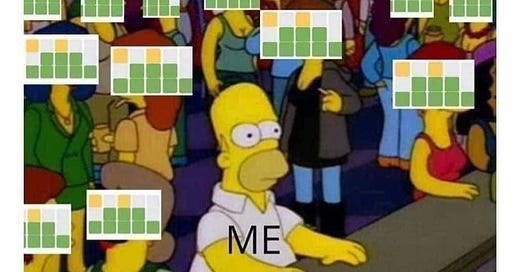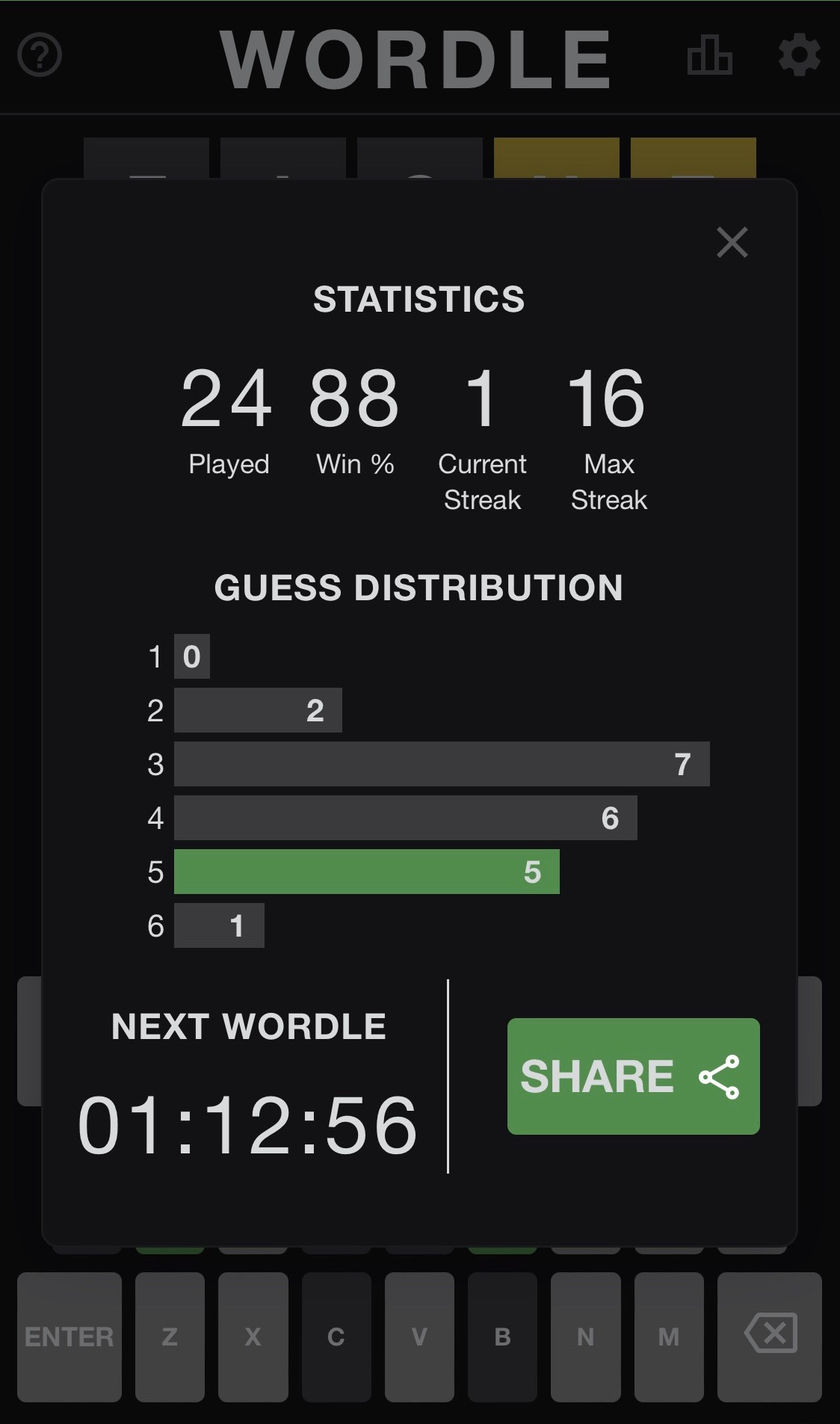Wordle, A Dead French Philosopher and The Hidden Force That Rules the World
What a viral word guessing game tells us about our desires
Has your social media feed been overrun with tiny green, yellow, and gray squares? Are your friends obsessed with five-letter words?
You have come across Wordle. Wordle is to 2022 what Sea Shanties were to 2021. It is an addictive and fun game that gives you six chances to guess the five-letter word of the day. The game also makes it easy to share your performance on social media through those ubiquitous green, yellow and gray grids.
The New York Times agreed to pay a “seven-figure” sum to the creator of Wordle for what is effectively a simple HTML and JavaScript app. There isn’t even the need for a fancy backend, machine learning, or, shockingly, a Web3 angle. And, there is a sweet love story behind the game too!
This is where our dead French philosopher comes in. Rene Girard will be known as one of the most important intellectuals of the 20th century.
Girard’s insight was that most of what we call desire is mimetic (or imitative). Put simply, humans learn, through imitation, to want the same things that other people want. So, most desires are mediated by seeing what our peers possess, what they do, and how they live. This mimetic force is the dominant force that influences how we live and work.
To quote the great man himself:
“Man is the creature who does not know what to desire, and he turns to others in order to make up his mind. We desire what others desire because we imitate their desires.”
Mimetic desire has, of course, been weaponized by social media. The blizzard of influencers, unboxing videos, glamorous selfies, and tales of the infinite hustle are kindling to the flames of mimetic desire. Facebook (sorry - Meta), TikTok, Snapchat, and Google all deploy billions of dollars worth of compute and brainpower to press our mimetic buttons in the service of their most important customers - their advertisers. Possibly the most efficient business model the world has ever seen.
Oh, btw, did you know that Rene Girard ended up at Stanford and some of Silicon Valley’s most influential people, including Peter Thiel, are followers of mimetic theory? Are you surprised?
Anyway, back to Wordle. Social sharing, in the form of the grid, is an essential (and fun!) part of the Wordle experience. But, it is also a fantastic example of mimetic desire at play.
You see your friends share a cryptic image on social media, you want to find out more, you want to be part of the “in crowd,” so you look up what this Wordle thing is. The next thing you know, it’s one minute past midnight, and you can’t wait to see what today's word will be.
Oh yeah, I am hooked.
Does that explain why the NYT paid seven figures for a “simple” game?
Mimetic theory is a complex, arcane field that covers philosophy, psychology, and literature. I found Girard’s writing impenetrable. In his book, Wanting, Luke Burgis does a fine job introducing the theory for the less philosophically inclined amongst us.






Excellent! Now, how is the NYT going to weaponize our mimetic desire? As it is, Wordle is the nicest, least corruptive force that uses this desire in a harmless way.